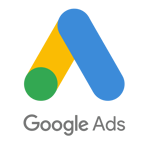Google Ads is an online advertising platform developed by Google, where businesses can create and display ads to reach their target audience. It operates on a pay-per-click (PPC) model, meaning advertisers only pay when users click on their ads. Google Ads is one of the most powerful tools for digital marketing, offering access to a vast audience through Google's search engine, YouTube, partner websites, and apps.
Key Features of Google Ads:
Multiple Ad Formats:
Search Ads: Text-based ads that appear on Google Search results.
Display Ads: Visual banner ads on websites within the Google Display Network.
Video Ads: Ads on YouTube or other video platforms.
Shopping Ads: Product listings with images, prices, and store information.
App Ads: Promotions to drive app installs and engagement.
Advanced Targeting Options:
Keywords: Target users searching for specific terms.
Audience Targeting: Reach users based on demographics, interests, or behaviors.
Location Targeting: Show ads to users in specific geographic areas.
Device Targeting: Optimize ads for desktops, tablets, or mobile devices.
Budget Control:
Set daily budgets and bid amounts to control spending.
Use automated bidding strategies to maximize results within your budget.
Performance Tracking:
Access detailed metrics like click-through rate (CTR), conversion rate, and cost-per-click (CPC).
Integrate with Google Analytics for deeper insights into user behavior.
Ad Rank and Quality Score:
Ad position is determined by Ad Rank, which considers bid amount, ad quality, and expected impact of ad extensions.
Quality Score measures the relevance of your ads, keywords, and landing pages, influencing CPC and ad placement.
Ad Extensions:
Add extra information to your ads, such as:
Sitelinks (additional links to specific pages).
Call extensions (phone numbers for direct contact).
Location extensions (business address or map).
Structured snippets (highlight specific features or services).
Remarketing and Custom Audiences:
Target users who have previously interacted with your website or app.
Create custom audiences based on user behavior and interests.
A/B Testing:
Run experiments with different ad copies, landing pages, or targeting options to optimize performance.
Cross-Platform Integration:
Seamlessly integrate with other Google tools like Google Analytics, Google My Business, and Google Tag Manager.
Smart Campaigns:
Simplified campaigns for small businesses, using automation to optimize ads and targeting.
Advantages of Google Ads:
Immediate Results:
Unlike SEO, which takes time to show results, Google Ads can drive traffic and conversions almost instantly after launching a campaign.
Highly Targeted Advertising:
Reach specific audiences based on keywords, demographics, location, interests, and behaviors.
Cost-Effective:
Pay only when someone clicks on your ad (PPC model), ensuring you get value for your investment.
Flexible budgeting allows businesses of all sizes to participate.
Measurable ROI:
Track performance in real-time with detailed analytics, including clicks, impressions, conversions, and return on ad spend (ROAS).
Wide Reach:
Access to billions of users across Google Search, YouTube, Gmail, and the Google Display Network.
Customizable Campaigns:
Tailor campaigns to specific goals, such as brand awareness, lead generation, or sales.
Competitive Advantage:
Outrank competitors in search results, even if they have a stronger organic presence.
Remarketing Opportunities:
Re-engage users who have previously visited your website or interacted with your brand.
Ad Extensions:
Enhance ads with additional information (e.g., phone numbers, links, location) to improve visibility and engagement.
Scalability:
Easily scale campaigns up or down based on performance and budget.
We Code the Future of Digital Marketing
Support
Consulting
enquiries@cglobaltech.com
© 2025. All rights reserved.


